
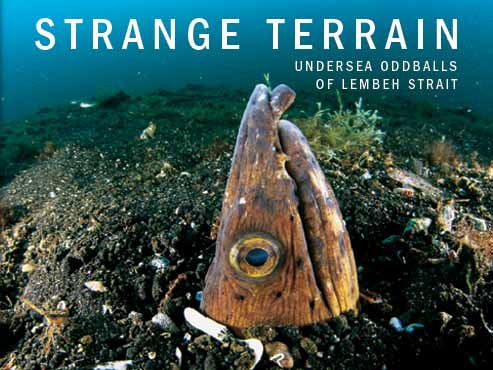
LEMBEH is CRITTERS DIVING CAPITAL OF THE WORLD
| Predators erupt from volcanic sands, and delicate pygmy seahorses hide in plain sight in the strange world of Indonesia's Lembeh Strait. Think of a coral reef as Las Vegas: a glowing city of sexy fish flitting down boulevards of neon corals. Then imagine an undersea neighborhood that's more like the gritty desert beyond Vegas, where you run into quirky characters like the guy running the one-pump gas station, or the bar where people wait for aliens. That's Indonesia's Lembeh Strait. 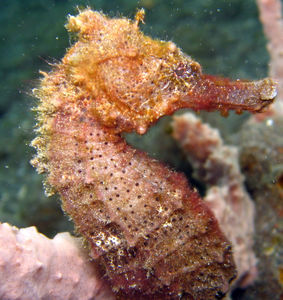 Lying off the northeast tip of the island of Sulawesi, sheltered from the open ocean, the strait is at first glance an unwelcoming moonscape—plains of silt and black and gray volcanic sands stretching into murky gloom. Some divers call it the muck. There are no grand vistas, no teeming corals. But any place you put your hand, there is life, veiled in the sand or hiding in plain sight. You have to look closely, for many things are not what they seem. I stared for minutes at a sea fan before finding pygmy seahorses the size of my thumbnail clinging to the branches, their skin matching the color and texture of the sea fan's polyps. Another night a rare visitor drifted into the cove of Kungkungan Bay, camouflaged in a floating mass of sargassum weed. As the seaweed slowly broke apart, a golden sargassum frogfish emerged in mirror image under the lights of a pier. Critter Diving in the Lembeh Straits, Sulawesi Locally called Joefish The water looks uninviting. This is where we are to dive next. 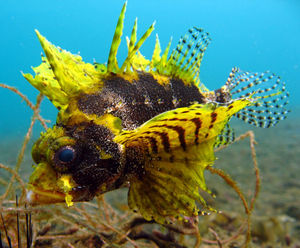 The Lembeh Straits are world famed for macro-life, Frogfish, Nudibranches, Scorpion and Lionfish and many other strange and wonderful creatures, most only ever seen by divers in books. A photographers paradise. I'm really looking forward to diving here. Back on the island (Perhentian Kecil) Eve of Coral Sky Divers had encouraged me to visit here - telling stories of the weird and wonderful creatures I'd see. 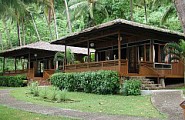 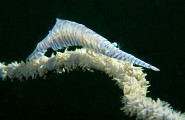 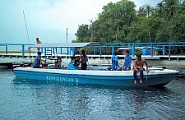 A small narrow boat squeezes between the large cargo vessels, a smiling cheeky looking Indonesian man waves to us and invites us aboard. Opo the chief dive guide at Two Fish Divers in the Lembeh Straits. The next day is the  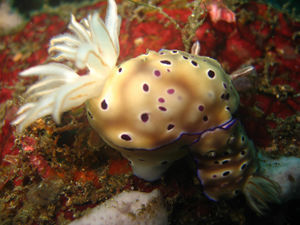 We spot Eels, Frogfish and Nudibranches by the hundreds, Franky and Opo point out creature after creature, this is muck diving at it's best. I am in paradise. I take photo after photo, watch the strange behaviour of the creatures. Referring to 1001 Nudibranches in the evenings - "geeky creature id sessions" (thanks Sunny!). 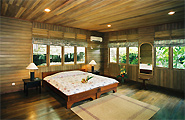 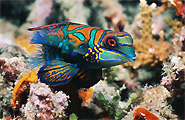 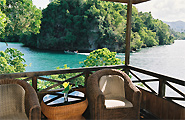 My favourites include the Hairy Frogfish - a fish based living teddy bear, Joefish - a colourful and characterful Dragonet that darts from crevice to crack breifly posing in each. The Imperator Shrimp that spends is existence on the back of a Nudibranch feeding on it faeces. Two days fly by, us five friends are the only customers at the time. Our mission is accomplished. Seeking out strange new creatures is easy in the Lembeh Straits. Lembeh Strait has been recognized in over the past several years recognized as the capital of critter diving – the one destination you visit . The place you come to see the broadest range of unusual and rare critters in tropical marine diving. all of the rare and unusual there is to see in the tropical marine diving. Several factors contribute to such outstanding diversity of this place: its geological history, its overall geographic position and the topography of Lembeh Strait. 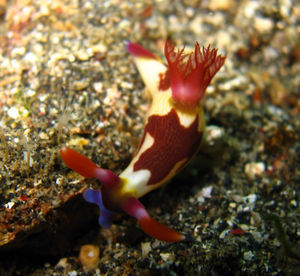
Geological history and geographic position
Lembeh Strait is situated between the tip of Northern Sulawesi and the Island of Lembeh. The repeated isolation of this area during the Pleistocene period times led to unmatched the highest known “speciation”: -- the ; development of new species. Recognized as an epicenter of marine biodiversity, North Sulawesi is known for the exceptional variety of its terrestrial and underwater life. Sulawesi straddles both the Asian and the Australian biogeographical zones, hosting the highest number of coral, plant and fish species on earth. For comparison, there are at least 450 species of hard coral species in this area, compared to the found 60 in the entirewhole Caribbean.Furtherrmore, a 30 cm difference between the levels of the Pacific and Indian Ooceans cause a huge massive movement of nutrient-rich water to flow through the Lembeh Strait. These the nutrients from these upwellsing are retained in the Strait by the actions of small eddies, slow water whirls, created by the narrowness of the passage and the fast changing water flows.
Topography of Lembeh Strait
Lembeh Strait is a narrow channel, about 14 km long and 1-2 km wide. While the general diversity of the area is caused by the unique geographic position of the Strait, its particular diversity is greatly enhanced by is already given by the geographic position of Lembeh Strait, the particular diversity is then greatly influenced by the vast array of different underwater habitats present in Lembeh. There are black volcanic sand slopes (TK Bbay, Rojos, etc.), white limestone sandy slopes (Pante Parigi, Tanjung Tebal, etc.), ship wrecks (Kapal Indah, Mawali), pinnacles (Batu Kapal) , zones of rubble patches (Police Pier, Bronsel, etc.) and and rocky reefs with colourful soft coral gardens (Nudi Retreat, Nudi Falls, Angels Window, Batu Sandar, etc.). In addition, the northern and southern entrances to the Strait are rimmed by , as well as the rich coral reefs rimming both the southern and the northern entrances to the Strait and there are unique shallows along the the shallows of the SStrait’s coast lines (Dante’s wWall, Pulau Putus, Batu Angus, California Dreaming, Goby a Crab, etc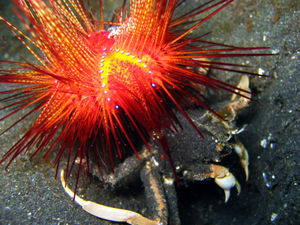 Each particular habitat supports a different set of marine organisms, and that is what makes Lembeh Strait so special. There are dive sites where we find the famous cephalopods of Lembeh: the mimic, wonderpus, mototi and hairy octopus and flamboyant cuttlefish, just to mention a few. Then there are the seahorse species, in addition tofrom the four pyigmy species found to date in Lembeh, there are the estuary, and common and thorny seahorses. When you ask our dive guides to show you a frogfish, they answer with a question: And hHow many would you like to see? This is because Lembeh is truly the frogfish capital. There are all types: the warty, and hairy, and painted and giant frogfish. just to name the most common ones. There are hundreds of nudibranch and crustacean species and the list of different fish species from the Scorpionidae family just goes on and on – and cockatoo wasp fish, devil fish, short spine lionfish, Ambon scorpionfish or Rhinopias are some of the examples.  There is nowhere else in the world, where visitors can find such an extensive array of marine life and underwater topographical features in such close proximity. 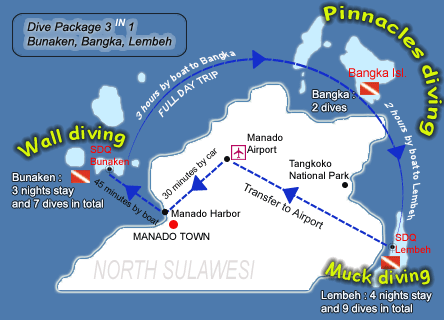 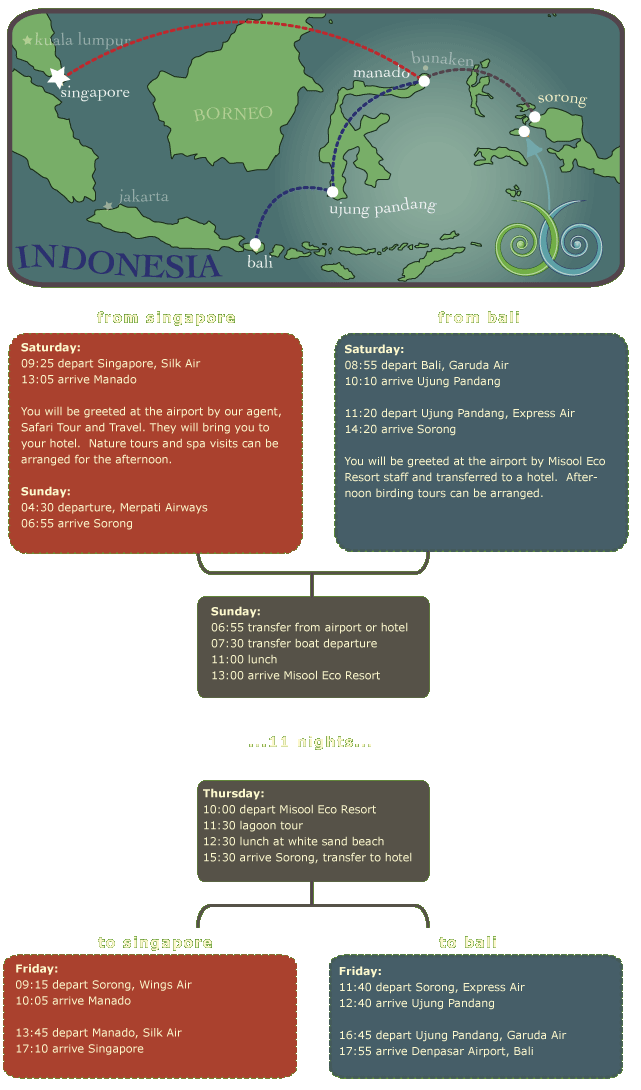 |
 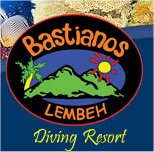  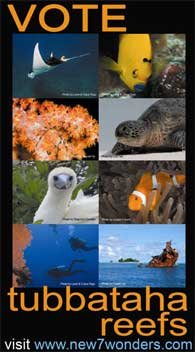 |
|||||
|
||||||
    |
 |
     |